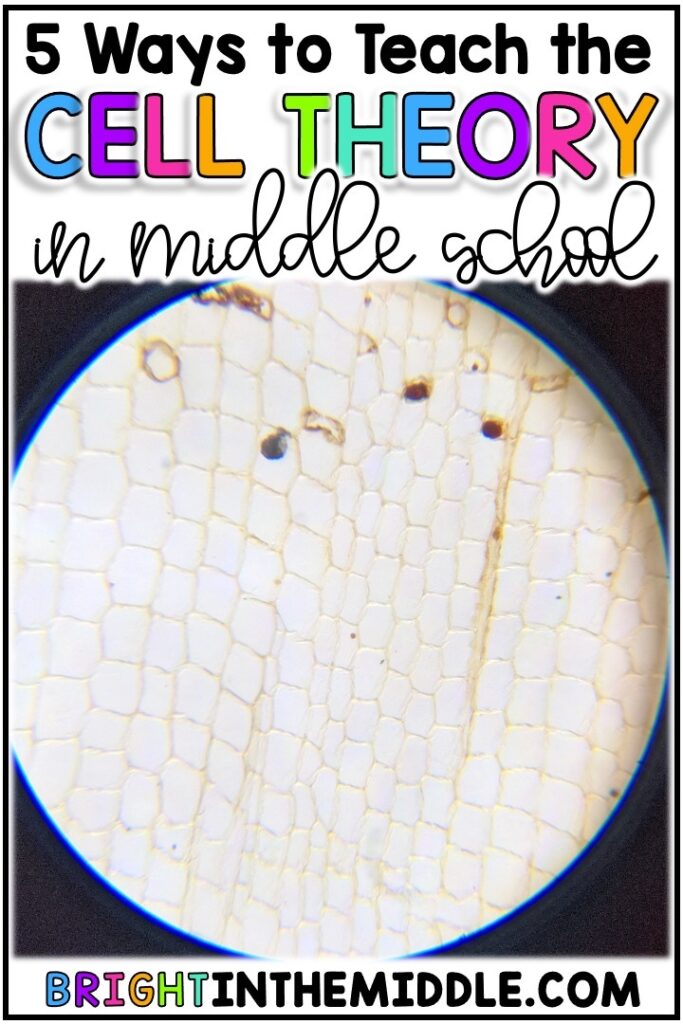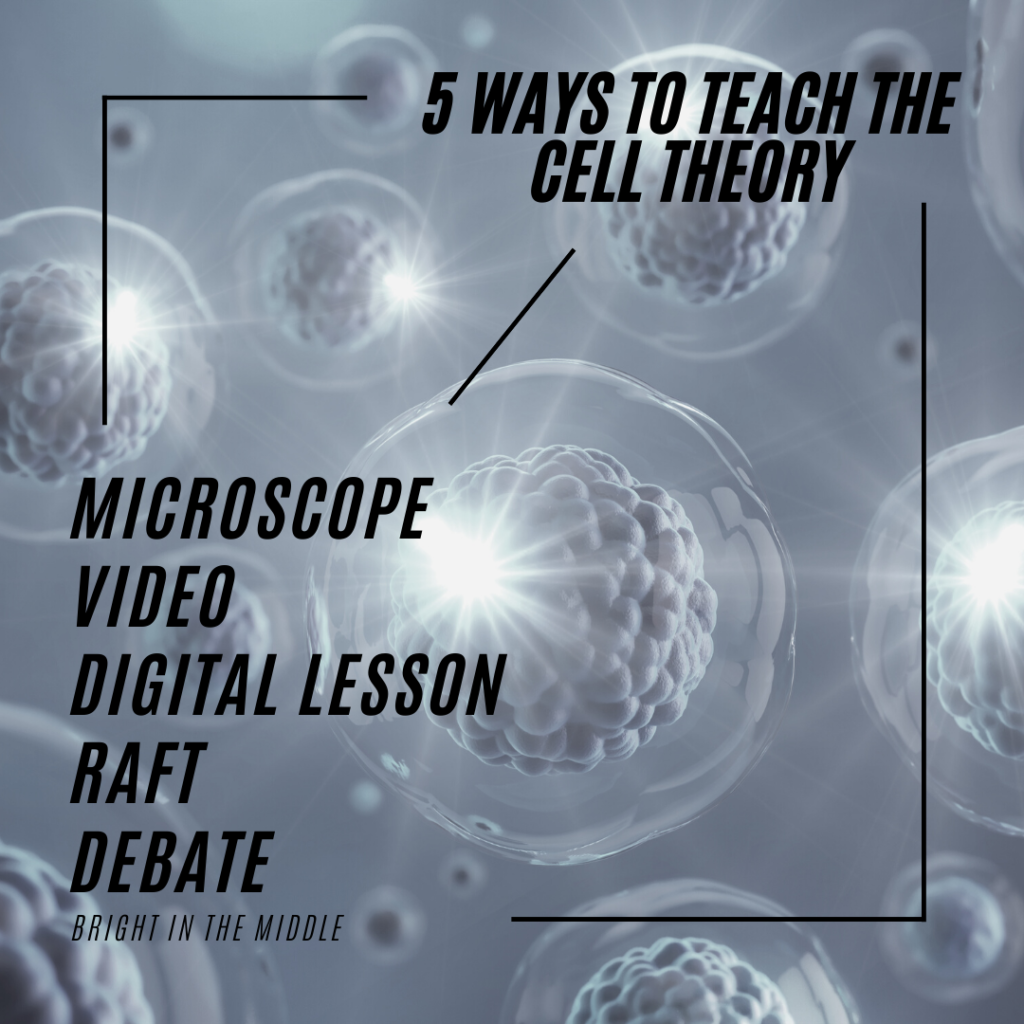What is the cell theory?
Years ago, scientists did not know cells existed. We now know that cells are the basic unit of living things. A group of scientists discovered cells, and their findings helped determine the cell theory, which laid the groundwork from modern biology. Beginning with the first cells being observed, until today, we know now so much more about cells!
What are the three parts of the cell theory?
The classical cell theory states that:
- All organisms are composed of cells.
- Cells are alive and the basic living units of organization in all organisms.
- All cells come from other cells.

5 ways to teach the 3 parts of the cell theory
I love teaching my students about this topic in a variety of ways. Here are some of my favorite ways to introduce and teach my students about cell theory. You can incorporate these ideas into your classroom as well! There are so many ways to engage your students!
1. Microscope – look at cork cells
Students can view cork cells under a microscope and observe what Robert Hooke uncovered in the 17th century about the properties of cork and the discovery of a cell.
2. Ted ed video:
This video is a great overview and explanation of the history of cell theory. It’s an animated video and it’s a great way to introduce this content to your students.
3. Digital Interactive Lesson
If you’re looking for something that’s already done and ready to go for you, then you’ll love this Cell Theory Digital Interactive Lesson I created. This digital interactive lesson is great for teaching about the three parts of the cell theory. It includes a link that is compatible with Google Slides™ and a PowerPoint version as well. This works well for middle school science. They are great for reducing cognitive load.
You can also find this on TPT!
4. RAFT Writing Assignment
I love doing RAFT writing assignments because my students like to “tap into” the role and they get creative with their writing. If you’re unfamiliar with a RAFT writing assignment that allows students to write creatively from different perspectives. The format looks like this:
- Role of the Writer: Who or what are you as the writer? A person? An animal? A plant?
- Audience: To whom are you writing? A friend? A famous person? Readers of a newspaper?
- Format: In what format are you writing? A letter? An email? A speech?
- Topic: What are you writing about? Why? What’s the subject or the point?
I love how RAFT writing assignments are easily adapted to various content areas. For cell theory, you can have students complete a RAFT assignment using the following prompts:
Role: bacteria, Audience: Leeuwenhoek, Format: a speech, Topic: choose their own
5. Host a debate – Robert Remak vs. Virchow
Who should be credited for the third part of the cell theory? Have your students claim a side and debate against each other. Debates are an exciting way to have your students engage with different topics. Have your students research each scientist and be prepared to defend the findings and hypothesis.

Help your students retain the science content. You’re students WILL be successful rockstars. Here’s the secret sauce!



[…] Cell Theory […]